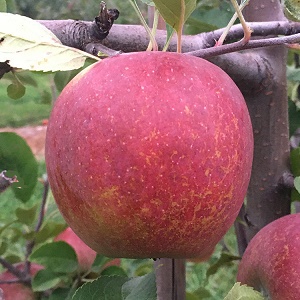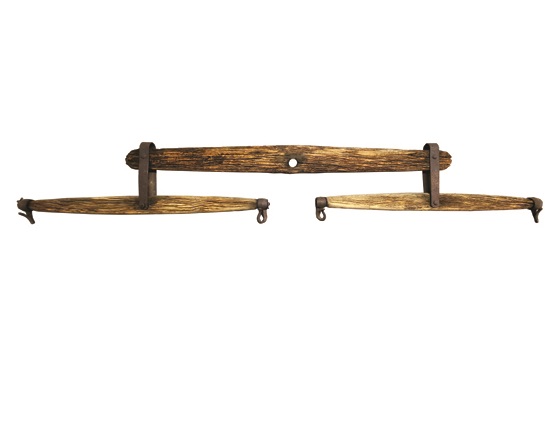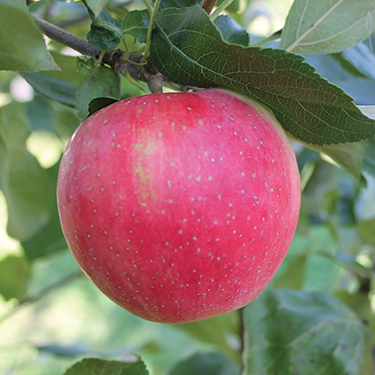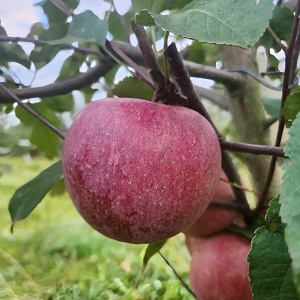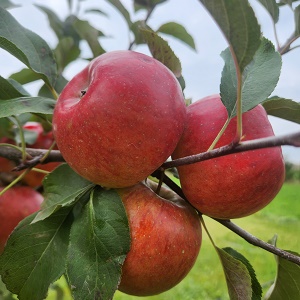Apple : WINECRISP™ Large Semi-Dwarf (B118) (Orchard Grade)
$37.95
An 'orchard grade' is a tree that may be somewhat shorter, slightly crooked, or a bit scratched, or for some other reason is not a perfect front lawn specimen. These trees will work just as well in an orchard as a first or number one would, since they still produce the very same fruit.
Winecrisp™ is the 19th apple cultivar developed by the joint efforts of Illinois, New Jersey, and Indiana university research. Some other illustrious graduates of the same program include Crimson Crisp, Pristine, and William's Pride. Like it's classmates Winecrisp™ has formidable disease resistance. Although it is not related to the venerable Winesap apple, the similarity in name is no accident. It has the same outstanding, yet understated beauty with a deep purple-red matte finish enhanced with a fine network of russeting. The crisp, rock-hard, cream-coloured flesh has twangy hints of citrus and wine to offset it's sweetness. Winecrisp™ is one of the best storage apples with a shelf life in excess of 6 months. The tree is precocious and productive, so aggressive hand thinning is recommended to maintain fruit size and annual bearing.
NEEDS A POLLENIZER | ZONE 4 | HARVEST : LATE OCT
Growing Tips
Besides selecting the most disease resistant varieties, there are
a few simple things to do to have better apples.
- Fertilize under the outer edges of your trees. There are no feeder roots next to the trunk. A well fed tree stays healthier. (Adequate calcium in the soil also helps so that apples keep longer.)
- Pick up fallen fruit and compost, dispose of, or feed to livestock (where possible).
- Rake up leaves in the fall and compost them away from the orchard.
- Prune trees to encourage light and air to reach the inside of the tree.
- Provide bird nesting sites near your orchard. A variety of orchard companion type plants will attract native pollinator insects and also encourage birds to come and eat insect pests.
